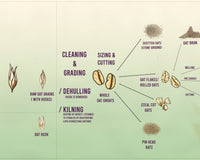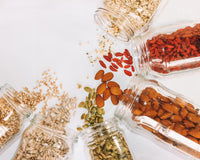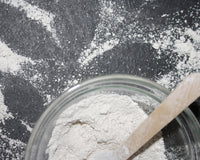Native to North America, blueberries have long been popular for their sweet, delicious taste and now they are even more popular because of the nutrients they bring in a small package. Specifically, people have discovered that blueberries are packed with antioxidants, those chemicals that mitigate the damage done to the cells by free radical molecules.
About Blueberries
Blueberries are found on acid-loving bushes that can grow to several feet in height. During the spring, the bush bears many white or pink bell-shaped flowers that turn into berries later on in the summer. In the fall, the oval leaves of the blueberry bush turn bright red-orange. To produce fruit, most blueberry bushes need to cross-pollinate with different varieties. Varieties include highbush blueberries, which can be grown throughout the United States; lowbush blueberries, which are found in New England and rabbit-eye blueberries, which are only grown in the south and the west of the United States. Lowbush blueberries tend to be wild, while highbush blueberries are cultivated.
The skin of the blueberry ranges from blue to deep purple-black depending on the cultivar. They also have a lovely, whitish "bloom." This bloom is not only pretty but protects the berry’s skin from pathogens. The skin is thin and encloses flesh that holds seeds so tiny that they're barely noticeable when the fruit is eaten. Blueberries are given their distinctive color by nutrients called anthocyanin flavonoids, which are antioxidants. One hundred grams of wild blueberries contain 558 milligrams of anthocyanin.
Blueberries are related to and sometimes mistaken for huckleberries, though huckleberries have hard seeds. Blueberries are actually more closely related to cranberries and also have relatives in bilberries and lingonberries.
Nutrition
The antioxidant and anti-inflammatory properties of blueberries come from substances called stilbenoids, specifically pterostilbene and resveratrol. Resveratrol is famous as the antioxidant found in red wine. It is found in blueberries in much smaller amounts. But pterostilbene acts very much like its fellow stilbenoid. It is both an anti-inflammatory nutrient and an antioxidant. Researchers have also found that it guards against diabetes and supports the health of the heart and the nerves. It also has anti-cancer properties and is more available to the body than resveratrol. For one thing, pterostilbene lasts a long time in the body until it is broken down.
Besides being rich in antioxidants, blueberries are low on the glycemic index. The glycemic index, or GI, measures how carbohydrates in a food affects blood sugar. The GI of blueberries is between 40 and 53. They also provide dietary fiber. About a cup of blueberries contains 3.5 grams of fiber. This healthy amount of fiber plus the low GI score suggest that blueberries are good for regulating blood glucose. This is good news for people with Type 2 diabetes.
Because blueberries have also been shown to protect the nerves, eating blueberries is important in supporting cognitive functioning in older people. People who had a cup of blueberry juice every day scored higher on cognitive function and memory tests.
A cup of fresh blueberries has 84 calories. It also has 32 percent of the daily value (DV) of vitamin K; 22 percent of the DV of manganese; 19 percent DV of vitamin C; 13 percent DV of dietary fiber and 9 percent DV of copper. It has 2 percent of the DV of protein; 10 percent of the DV of carbohydrates and 1 percent of the DV of fat.
As for minerals, blueberries are rich in calcium, magnesium, phosphorus, and potassium as well as manganese. They have a surprising amount of omega-3 fatty acids, which are famous for being found in cold water fish and flaxseed oil. A cup of blueberries provides 4 percent of the DV of omega-3 fatty acids. It also has some linoleic acid, folic acid, palmitic acid and stearic acid.
Where to Buy Blueberries
Blueberries are easily found year-round in supermarkets, though they’re most abundant in mid-spring to mid-fall. They can also be found in summer farmer’s markets, and if a person is lucky, they can head to a blueberry farm and pick their own. The berries should be firm and bright with a bloom. One tip is to shake the container or the bag, even if the berries are frozen. If fresh blueberries don’t move around, they may be overripe and starting to go moldy. Frozen berries that don’t move freely may have been thawed out then frozen again. Blueberries need to be dry and stay that way until just before they are eaten.
Once picked and brought home, blueberries need to be refrigerated in a covered container to protect them from spoiling. Go through the blueberries and discard ones that are moldy or squashed. Blueberries freeze wonderfully and usually don’t lose much of their nutritional value from being frozen for up to six months. A good way to freeze blueberries is to lay them in a single layer on a cookie sheet, and let them freeze solid. Then, store them in a plastic freezer bag.
Blueberries can be canned and even pickled. Properly canned blueberries can last up to two years.
Growing Blueberries
Many people grow blueberry bushes in their yard. They are easy to grow in well-drained, acidic soil but have a shallow root system. They need to be mulched with low pH mulch such as sphagnum moss. Mulch keeps the roots from drying out and discourages competing weeds. Blueberry bushes need full sun and a place where they won’t be disturbed, so they shouldn’t be placed near walkways, driveways or play areas.
All blueberries need a period where the temperature dips below 45 degrees Fahrenheit to bear fruit. Highbush and lowbush blueberries need 650 to 800 hours of these temperatures, while rabbit-eyes need only 200. The bushes shouldn’t be pruned until the third year after they are planted, for they bear fruit near the tips of branches that are two years old or older. It’s best if the gardener just thin out damaged or diseased branches, and cut back very old canes to the main stem.
The berries mature about two months after the flowers are pollinated and should be left on the bush for five to 10 days after they turn blue. They’re ready when they are a bit soft and slide off the bush easily.
Blueberries are delicious and nutritious, whether they are eaten in pies, slushies, cobblers, ice-cream or out of hand. They're easy to find and even easy to grow. If you're not eating them regularly, you should!
References:
https://en.wikipedia.org/wiki/Anthocyanin
https://www.almanac.com/plant/blueberries
https://www.kyaniteamgenesis.com/kyani-sunrise/






